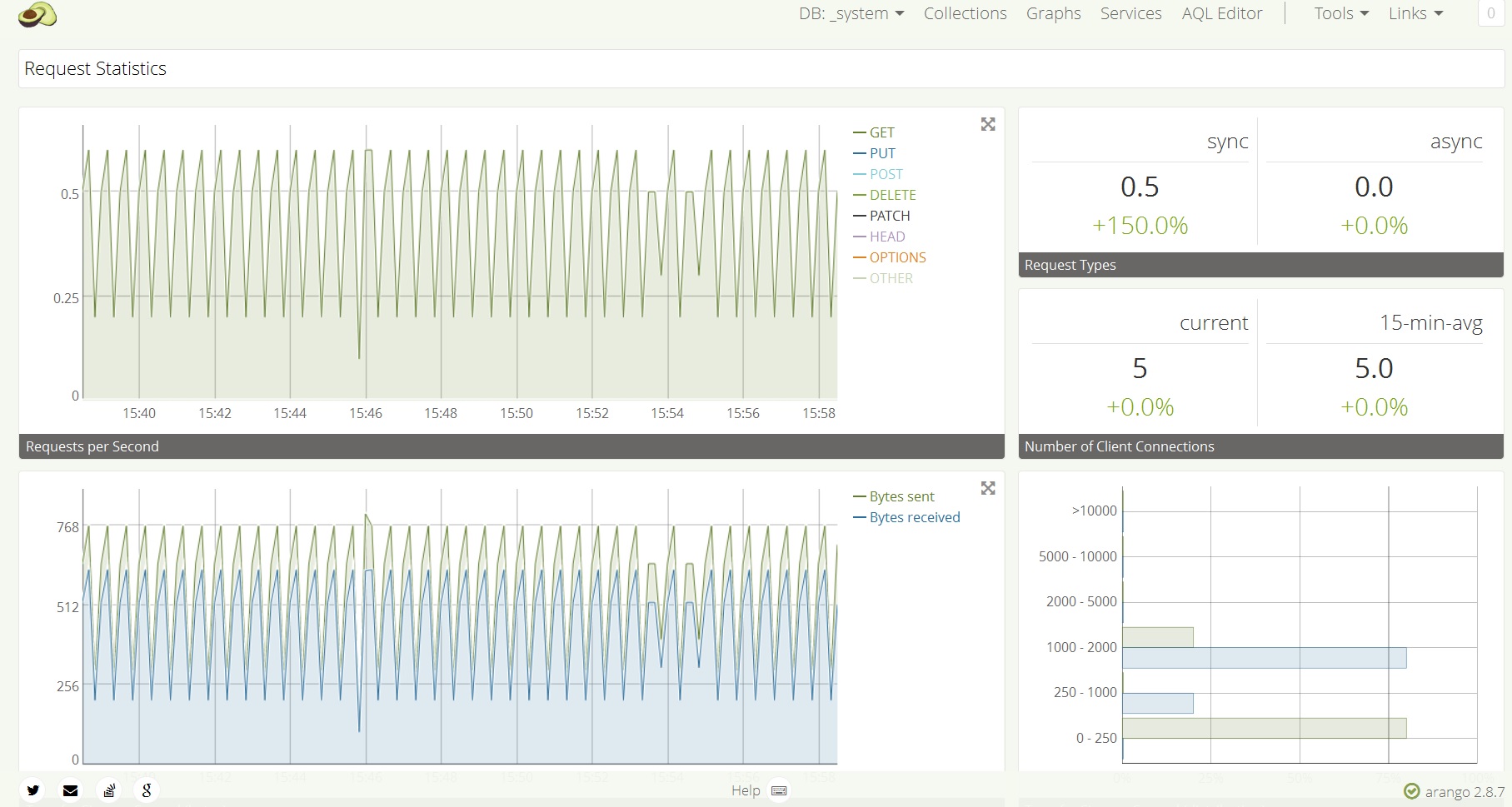
A graph traversal algorithm to query for all paths with the shortest value, between two documents.Support for computed values (persistent document attributes that are generated when a document is created or updated).Native ARM support, including native support for Apple silicone.
#Arangodb qal break for series#
In October 2021 ArangoDB raised 27.8 million dollars in series B funding led by Iris Capital. In March 2019 ArangoDB raised 10 million dollars in series A funding led by Bow Capital. In January 2017 ArangoDB raised a seed round investment of 4.2 million Euros led by Target Partners. The word "arango" refers to a little-known avocado variety grown in Cuba. Later, they changed the name to ArangoDB. They originally called the database system “A Versatile Object Container", or AVOC for short, leading them to call the database AvocadoDB. was founded in 2015 by Claudius Weinberger and Frank Celler. ArangoDB is a NoSQL database system but AQL is similar in many ways to SQL. AQL is mainly a declarative language and allows the combination of different data access patterns in a single query. ArangoDB is a multi-model database system since it supports three data models (graphs, JSON documents, key/value) with one database core and a unified query language AQL (ArangoDB Query Language).
#Arangodb qal break for free#
The performance will very likely not be an issue.Multi-model database, Graph database, Document-oriented database, Key/Value database, Full-text Search EngineĪrangoDB is a free and open-source native graph database system developed by ArangoDB Inc. But I'd suggest not missing the opportunity to structure the data in the most useful way. Species taxonomy isn't my field and the examples are probably nonsense. You'd be creating alternative interconnect networks using exactly / mostly same set of species nodes. If there are multiple schools of thought, multiple classifications, or other frameworks that describe alternate pathing between the species then I'd be looking at capturing each in a different edge collection.įor example if one taxonomy pathing is arrived at by jaw shape, another always uses the pelvis, if countryX has another method, and another is DNA based it could be instructive to dedicate an edge collection to each. And start with one collection for the 'begats' edge collection to capture the species evolution pathways. In your example I'd probably have one collection for the species nodes. I've chosen to focus on modeling the relationships to best represent the dataset and have not regretted this. This amount of data presents no performance challenges to ArangoDB. I've got a taxonomy project in ArangoDB that seems roughly equivalent in terms of the data record count that you report. Will I be using a single instance or a distributed cluster? Honestly, either! Whatever will speed up reads. I'm not worried about write speed at all. This project will almost exclusively be READING.

Please see the comments for some questions and answers.Īlmost every single query will span multiple types.

If that makes sense? 6 degrees of Kevin Bacon type thing.

The types of queries would be shortest path and any connectedness between each. Type can have multiple parents and children. If I break this out into different edge collections, it would be 4 collections with about 300,000 rows in each. My specific questions is: Does building graphs in ArangoDB, that uses multiple collections, take a performance hit? Will using one large collection be more efficient for graphs? There's a small possibility that it would be useful in the future for features I haven't thought of yet. Putting they different types in different collections would only be for superficial organizational reasons. I will be building a graph that connects all of these.Įxample: parent/child of ancient homo species: Homo habilis->Homo floresiensis->Homo erectus->Homo sapiens I'm building an ArangoDB edge collection that consists of many "types".


 0 kommentar(er)
0 kommentar(er)
